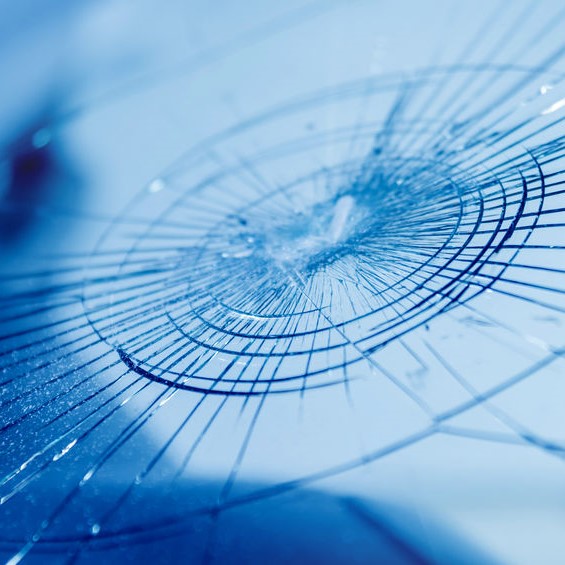
Want Perfect Glass?
Glass is a versatile and widely used material in various aspects of our lives, from residential and commercial buildings to automobiles and electronic devices. Its transparency and durability make it an essential component of modern construction and design. However, like any other material, glass is susceptible to damage over time due to various factors. Understanding the common types of glass damage, their causes, and potential solutions is crucial for maintaining the safety, functionality, and aesthetic appeal of glass structures.
Types of Glass Damage:
- Scratches: Surface scratches are a common form of glass damage that can occur due to contact with abrasive materials or improper cleaning techniques. While minor scratches may not affect the structural integrity of the glass, they can compromise its visual clarity and appearance.
- Cracks: Cracks in glass can result from impact, stress, or temperature fluctuations. They may start as small hairline cracks and gradually spread, compromising the strength and safety of the glass. Cracked glass poses a significant safety risk, especially in windows, doors, and automotive windshields.
- Chips: Chips are small, localized areas of glass damage that can occur due to impact or contact with hard objects. While they may seem minor, chips can weaken the glass and create stress points that may lead to further damage over time.
- Haze or Fog: Haze or foggy appearance on glass surfaces is often caused by the accumulation of dirt, dust, or moisture both inside and outside the glass. This can affect visibility and diminish the aesthetic appeal of glass windows, doors, and mirrors.
Causes of Glass Damage:
- Impact: Accidental impacts from objects or debris can cause scratches, cracks, and chips in glass surfaces. Common sources of impact include flying debris during construction, hailstorms, and contact with hard objects in residential or commercial settings.
- Temperature Fluctuations: Glass expands and contracts in response to temperature changes. Rapid or extreme temperature fluctuations, such as those experienced during seasonal changes or direct exposure to sunlight, can create stress on the glass, leading to cracks or fractures.
- Poor Installation: Improper installation techniques or using low-quality materials can compromise the structural integrity of glass components, making them more susceptible to damage over time. This includes inadequate sealing, improper alignment, and using incorrect glass thickness for specific applications.
- Abrasive Cleaning Methods: Harsh chemicals, abrasive cleaners, or rough cleaning tools can scratch or damage glass surfaces, especially those with delicate coatings or finishes. Improper cleaning techniques can also leave behind streaks, haze, or residue that affect visibility and appearance.
- Natural Wear and Tear: Over time, exposure to environmental factors such as sunlight, moisture, and pollutants can cause gradual deterioration of glass surfaces. This includes issues such as glass corrosion, discoloration, and surface pitting, particularly in outdoor or high-traffic areas.
Solutions for Glass Damage:
- Repair vs. Replacement: The appropriate solution for glass damage depends on the severity and extent of the damage. Minor scratches, chips, and haze can often be repaired using specialized glass polishing techniques or surface treatments. However, extensive cracks or structural damage may require complete glass replacement to ensure safety and stability.
- Professional Inspection: In cases of significant damage or uncertainty about the extent of the issue, it’s essential to seek the expertise of a professional glass repair company. Experienced technicians can assess the damage, recommend appropriate solutions, and perform repairs or replacements with precision and efficiency.
- Preventative Maintenance: Regular cleaning and maintenance of glass surfaces can help prevent minor damage and prolong their lifespan. Using gentle cleaning solutions, soft cloths, and non-abrasive tools can minimize the risk of scratches and surface damage. Additionally, applying protective coatings or films to glass surfaces can enhance durability and resistance to environmental factors.
- Quality Materials and Installation: Choosing high-quality glass materials and working with reputable glass installation professionals are crucial for ensuring the longevity and performance of glass structures. Proper installation techniques, adequate sealing, and adherence to industry standards can minimize the risk of damage and ensure optimal functionality.
In conclusion, understanding the common types of glass damage, their causes, and potential solutions is essential for maintaining the safety, functionality, and appearance of glass structures in residential, commercial, and automotive settings. By addressing glass damage promptly and employing preventative maintenance measures, property owners can prolong the lifespan of their glass components and ensure long-term durability and performance.
We specialize in professional glass repair and replacement services for residential and commercial properties. Our team of experienced technicians is dedicated to delivering exceptional results and restoring the integrity and aesthetics of glass structures. Contact us today for expert glass repair solutions tailored to your needs.
Call us today at 817-937-6267 to take care of your glass damage needs!
